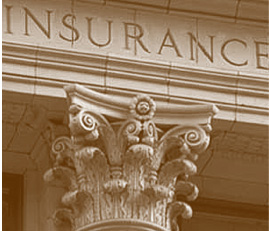Department of Financial Services Superintendent Benjamin Lawsky sent a letter to hundreds of car and property insurers asking for any details on math-driven models that seek to predict how customers react to various price levels, according to a copy reviewed by The Wall Street Journal. The practice, according to the letter, could violate a state law that prohibits "unfairly discriminatory" rates.
New York's regulator "is concerned that insurers are charging higher premiums based on whether a consumer is less likely to notice, shop around or object," according to the letter from Mr. Lawsky, which went to companies including Allstate Corp. and American International Group Inc. Those insurers didn't have immediate comment.
The analysis of customer behavior-known within the industry as "price optimization"-is under increasing scrutiny around the U.S. as consumer advocates argue lower-income individuals lack the means to compare rates and could be charged more. Since October, California, Maryland and Ohio have banned the pricing technique. Vehicle owners are required to buy car insurance in most states.
Insurance-industry trade groups said regulators have an oversimplified view of how price optimization works, and they maintain that the math-driven analysis isn't applied at the moment an individual purchases a policy.
An informal version of price optimization long has been part of the rate-setting process for car insurance-and in other industries such as airlines. Actuaries typically work up a range of estimated prices they believe would cover the financial risk of insuring pools of customers. They consider driving history, age, gender, vehicle type, credit score and other factors that affect claims costs. It is also common for insurers to take into account market-related factors, such as rivals' prices, before deciding on a final rate that is filed with state insurance departments, according to industry executives and consultants.
But now more powerful computers are allowing insurers to apply more precision to the process. Insurers can crunch large sets of data-including how customers respond to price quotes-to predict how their business will perform when the policies are priced at different amounts.
Exactly how many U.S. car insurers are using price optimization more aggressively isn't clear. California's insurance regulator, in banning the technique, said the department didn't have specific evidence that any insurers were using it. A spokeswoman said the state took "pre-emptive action."
Mr. Lawsky also doesn't know if price optimization is being used by any insurers in the state, he said in an interview. "If it is happening, it is potentially unfair and we would probably want to take some action."
Alex Hageli, an executive at Chicago trade group Property Casualty Insurers Association of America, said his organization appreciated Mr. Lawsky’s willingness to “survey insurers about this issue before taking any regulatory action.”
Robert Hartwig, president of trade group Insurance Information Institute, said the advanced analytical techniques “bring more sophistication, rigor and precision into the process, which previously relied more heavily on pure judgment.”
Mr. Hartwig also said he disagreed with the argument that lower-income consumers could be hurt because they have fewer choices for insurance coverage. An Insurance Information Institute poll of U.S. consumers last year found that 68% of people with annual income under $35,000 compared prices when buying auto insurance, a higher percentage than any other income group. Sixty-one percent of respondents with income above $100,000 said they shopped around.
Auto insurance is an “intensely competitive business and also one of the most heavily advertised,” Mr. Hartwig said. “Consumers, including lower income policyholders, are savvy and know that shopping for insurance can potentially result in significant savings.”













 New York's top financial watchdog warned insurers this week about charging higher prices to customers least likely to shop around, the latest state to raise questions about how the industry uses data when setting rates.
New York's top financial watchdog warned insurers this week about charging higher prices to customers least likely to shop around, the latest state to raise questions about how the industry uses data when setting rates.